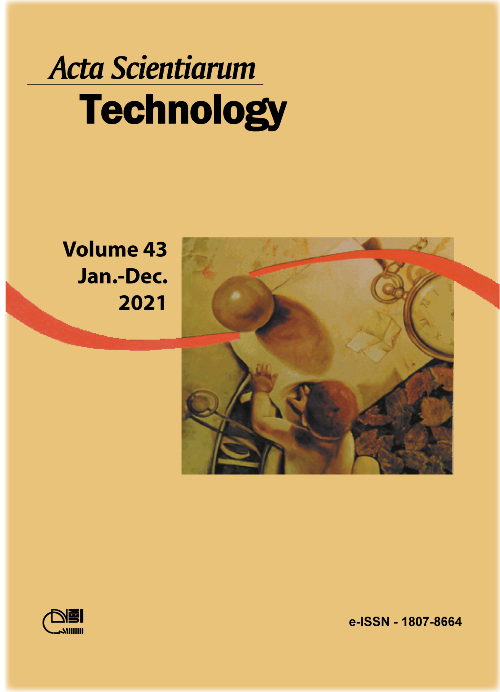Simulation of future climate scenarios and the impact on the water availability in southern Brazil
DOI:
https://doi.org/10.4025/actascitechnol.v43i1.56026Keywords:
Moisture index; PGECLIMA_R; stochastic simulation; regional climate change; BrazilAbstract
Water is an essential natural resource that is being impacted by climate change. Thus, knowledge of future water availability conditions around the globe becomes necessary. Based on that, this study aimed to simulate future climate scenarios and evaluate the impact on water balance in southern Brazil. Daily data of rainfall and air temperature (maximum and minimum) were used. The meteorological data were collected in 28 locations over 30 years (1980-2009). For the data simulation, we used the climate data stochastic generator PGECLIMA_R. It was considered two scenarios of the fifth report of the Intergovernmental Panel on Climate Change (IPCC) and a scenario with the historical data trend. The water balance estimates were performed for the current data and the simulated data, through the methodology of Thornthwaite and Mather (1955). The moisture indexes were spatialized by the kriging method. These indexes were chosen as the parameters to represent the water conditions in different situations. The region assessed presented a high variability in water availability among locations; however, it did not present high water deficiency values, even with climate change. Overall, it was observed a reduction of moisture index in most sites and in all scenarios assessed, especially in the northern region when compared to the other regions. The second scenario of the IPCC (the worst situation) promoting higher reductions and dry conditions for the 2099 year. The impacts of climate change on water availability, identified in this study, can affect the general society, therefore, they must be considered in the planning and management of water resources, especially in the regional context
Downloads
Downloads
Published
How to Cite
Issue
Section
License
DECLARATION OF ORIGINALITY AND COPYRIGHTS
I Declare that current article is original and has not been submitted for publication, in part or in whole, to any other national or international journal.
The copyrights belong exclusively to the authors. Published content is licensed under Creative Commons Attribution 4.0 (CC BY 4.0) guidelines, which allows sharing (copy and distribution of the material in any medium or format) and adaptation (remix, transform, and build upon the material) for any purpose, even commercially, under the terms of attribution.
Read this link for further information on how to use CC BY 4.0 properly.











8.png)




